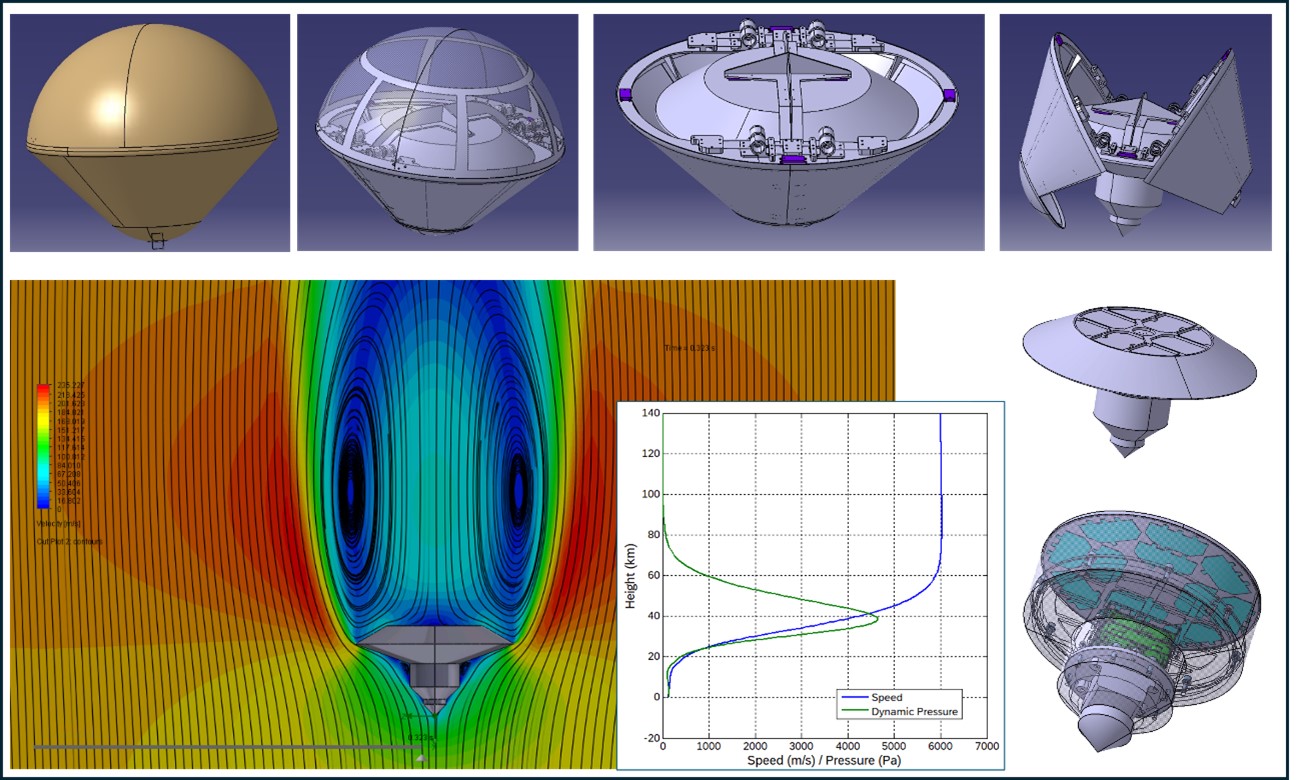Mars environmental networks through the MarsConnect microprobes
- 1Instituto Nacional de Técnica Aeroespacial (INTA). Torrejón de Ardoz. Madrid. Spain.
- *A full list of authors appears at the end of the abstract
In the last 15 years the Payloads Department of INTA has developed a variety of compact sensors for different Mars exploration missions. This includes a magnetometer (72 g), a dust sensor (35 g; with UC3M, Spain) and a radiometer (114 g) for the MetNet penetrator [1]; a radiometer (25 g optical head, 56 g processor) for DREAMS (Schiaparelli) [2], [3]; a radiometer plus camera (1 kg) for MEDA on Perseverance [4], [5]; a 110 g dust sensor (with UC3M, Spain) [6] and a radiometer plus spectrometer (180 g) for the METEO package [7] on Kazachock lander (ExoMars’22) and a 0.5 kg nephelometer (with INAF and Politecnico di Milano, Italy) [8] for the Dust Complex on the same lander. Equally miniaturized sensors exist for the measurement of the most relevant environmental variables, such as radiative balance, air temperature, wind, humidity, pressure, dust saltation, electric field, etc. with enough flight heritage (or technology readiness level) on the same sensors’ suites on Perseverance and ExoMars, as well as Insight or Curiosity before [9].
In summary, a large portfolio of miniature sensors for environmental research is available at present. However, a qualitative leap on (in-situ) Mars climate science will only happen through the deployment of networks of environmental stations throughout large areas of the planet. Given the relevance of these measurement not only from a scientific point of view but also because of their importance for future human missions to Mars, this is an objective considered in several Mars exploration roadmaps such as ESA’s Terrae Novae 2030+ [10].
With this aim, we propose a microprobe named MarsConnect. It consists of a 10-12 kg probe with a rigid, deployable aeroshell/TPS and a 5-6 kg impactor/penetrator carrying up to 1 kg of environmental sensors. Many of these probes could be launched to Mars with a single carrier, to deploy meteorological networks. This works inherits different concepts from previous similar proposals, very specially MetNet and MiniPINS [11], but simplifying even more the EDL concept and reducing the mass, at the expense of an increased impact speed.
The probe’s aeroshell is divided into a backshell and two halves of a frontshield that are opened in the low supersonic regime to drop the penetrator. This one is equipped with a drag-skirt that provides some braking and increases stability. The expected impact speed, highly dependent on the atmospheric density profile, entry conditions and landing altitude, ranges from less than 100 to 140 m/s. The whole system is designed to be compatible with a wide range of scenarios and landing sites and is sized to endure more than one Martian year operating on the planet’s surface.

Fig. 1. CAD views of the MarsConnect probe and its eyectable aeroshell, plus some details of CFD and EDL analysis.
The present development status and short-term plans will be presented.
References: [1] Harri A-M et al. (2017), Geosci. Instrum. Method. Data Syst. 6, 103-124. [2] I. Arruego et al. (2017) Adv. in Space Res. 60 (2017). [3] F. Esposito et al. (2018) Space Sci. Rev. (2018) 214:103. [4] J.A. Rodríguez-Manfredi et al. (2021) Space Sci. Rev. 217:48. [5] V. Apéstigue et al., Sensors 2022, 22(8), 2907. [6] A. Russu et al. (2019) SPIE, Vol. 11129. [7] D. Rodionov et al., Vol. 12, EPSC2018-732. [8] D. Scaccabarozzi et al., 2019 IEEE MetroAeroSpace. [9] J. Gómez-Elvira et al., Space Sci. Rev., 2012, 170:583-640. [10] ESA, Nov.’21. [11] I. Arruego et al., LowCostMars2022.
I. Arruego1, V. Apéstigue1, L. Bastide1, J. Azcue1, A. Gonzalo1, J. Martínez-Oter1, N. Caballero1, G. Liaño1, J. Torres1, M. González-Guerrero1, F. Serrano1, J.R. de Mingo1, J. Rivas1, N. Andrés1, I. Carrasco1, M. Fernández1, M. Reina1, J. R. Ruiz-Carrasco1, D. Poyatos1, D. Scaccabarozzi2, M. Frovel1, M.A. de la Torre1, S. Martín1, R. Pedraza1.
How to cite: Arruego, I. and the MarsConnect team: Mars environmental networks through the MarsConnect microprobes, Europlanet Science Congress 2024, Berlin, Germany, 8–13 Sep 2024, EPSC2024-92, https://doi.org/10.5194/epsc2024-92, 2024.